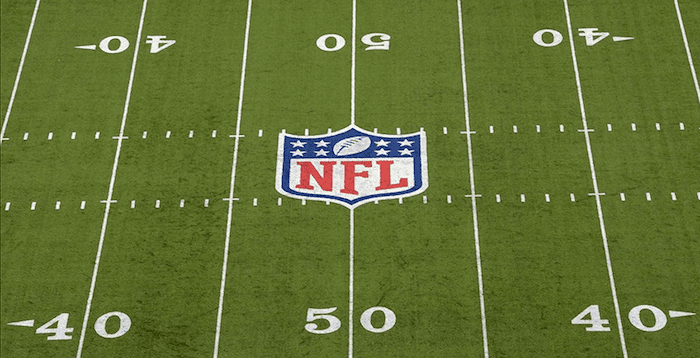NFL betting can seem intimidating at first glance, with its array of numbers, terms, and options. However, once you grasp the basics, you’ll find it’s an exciting way to engage with America’s favorite sport. That’s why many choose to participate. In fact, during the 2023 season, 50 million Americans wagered, making the total bets USD$ 16 billion
Do you want to take part in this excitement but don’t know where to start? Read on to know how.
Understanding the Basics of NFL Betting
Now, before you get into the nitty-gritty of odds and point spreads, you’ve got to do this one important thing: get a feel for the NFL betting scene. Picture this: 32 teams duking it out over a 17-week season. That’s a whole lot of football, and that means some serious betting action!
Every week, you’ve got a smorgasbord of options. Want to bet on who’ll win a single game? Go for it. Feeling lucky about a team’s entire season? There’s a bet for that, too. You can even put money on specific plays within a game.
Are you a beginner searching for NFL best bets? You can start by checking out NFL expert insights and unbiased picks to help you make better decisions. They’re readily available for everyone, so you won’t have a hard time finding them.
On that note, continue reading if you want to get to know the most common types of NFL wagers.
Point Spread Bets
Point spread betting is one of the most popular forms of NFL wagering. Here, oddsmakers assign a handicap to the favored team to level the playing field.
Let’s break this down further: The favored team is assigned a negative number (e.g., -7), while the underdog is given a positive number (e.g., +7). For a bet on the favorite to win, that team must win by more than the assigned spread. A bet on the underdog wins if that team either wins outright or loses by less than the spread.
This system creates a more balanced betting scenario that even lopsided matchups become interesting from a wagering perspective. It’s worth noting that approximately 15% of NFL games are determined by three points, which is why you’ll often see point spreads hovering around this number.
Example
New England Patriots -7 (-110)
New York Jets +7 (-110)
In this scenario, the Patriots are favored by 7 points. If you bet on the Patriots, they need to win by more than 7 points for your bet to pay out. If you bet on the Jets, you win if they either win the game outright or lose by less than 7 points.
The ‘-110’ next to each team represents the odds, which we’ll explain in more detail later.
Moneyline Bets
In moneyline betting, you’re picking which team will win the game outright. How it works is relatively simple. Each team is assigned odds based on their perceived likelihood of winning. Favorites have negative odds, while underdogs have positive odds.
A pretty straightforward approach, right? Bettors’ only job is focus on which team they believe will emerge victorious, and they won’t even have to consider point spreads or tricky factors. And remember that the odds assigned to each team directly reflect the bookmaker’s assessment of their chances. Now, what does this mean? It’s so much easier to understand the potential risk and reward of your wager.
Example
Green Bay Packers -200
Chicago Bears +170
In this case, the Packers are favored to win. A USD$ 200 bet on the Packers would win USD$ 100 if they’re victorious. Conversely, a USD$ 100 bet on the Bears would win USD$ 170 if they pull off the upset.
Over/Under (Totals) Bets
Over/under betting, also known as totals betting, involves wagering on the total combined score of both teams in a game. The process is straightforward: oddsmakers set a total number of points, and bettors wager on whether the actual combined score will be over or under that number. ‘Over’ bets need to exceed the total, while ‘under’ bets must stay lower.
This type of bet allows fans to predict the overall flow of the game without necessarily picking a winner. It’s particularly appealing to those who have a sense of whether a game will be high-scoring or defensive in nature.
The over/under bet adds an extra layer of excitement to the game, as every point scored (or not scored) can make a difference to the outcome of the wager.
Example
Los Angeles Rams vs. San Francisco 49ers
Over/under: 47.5 (-110)
If you bet the over, you’re predicting the total score will be 48 points or more. If you bet the under, you’re expecting 47 points or fewer.
Understanding Odds

It’s now time to learn how odds work. They tell you two important things: how much you need to bet to win a certain amount and how likely the bookmaker thinks an outcome is.
American Odds
In the United States, odds are typically presented in American format. These can be positive or negative numbers.
Negative Odds
Negative odds are a key concept in football betting, particularly when it comes to favorites or more likely outcomes. They indicate the amount you need to bet to win USD$ 100. For example, if you see odds of -110, it means you need to bet USD$ 110 to win USD$ 100 (plus your initial stake back).
Now, these negative odds are usually tied to the favorites or the outcomes that everyone thinks are going to happen. Getting a grip on them is super important if you want to be smart about your bets. This is especially true when you’re thinking about putting money on the team everyone expects to win. Sometimes the favorite isn’t always the best bet, and understanding these odds helps you make that call.
Positive Odds
Positive odds are an essential aspect of sports betting, particularly when it comes to underdogs or less likely outcomes. These odds show how much you would win on a USD$ 100 bet. For example, if you see odds of +150, it means a USD$ 100 bet would win USD$ 150, plus you’d get your initial stake back. So, in total, you’d receive USD$ 250 if your bet is successful.
Positive odds are usually associated with underdogs or less likely outcomes. This higher potential payout reflects the increased risk associated with betting on a less favored outcome, making it an attractive option for bettors looking for bigger returns on their wagers.
Converting Odds to Implied Probability
Understanding the implied probability of odds can help you assess whether a bet offers value. Here’s how to convert American odds to implied probability:
For Negative Odds
Implied Probability = Negative Odds / (Negative Odds + 100)
Example: -110 odds
Implied Probability = 110 / (110 + 100) = 0.524 or 52.4%
For Positive Odds
Implied Probability = 100 / (Positive Odds + 100)
Example: +150 odds
Implied Probability = 100 / (150 + 100) = 0.4 or 40%
Factors Influencing NFL Betting
Several factors can impact NFL odds and point spreads. Understanding these crucial elements can help bettors make more informed decisions.
- Team performance: Recent form, historical head-to-head records, and overall season performance.
- Injuries: The absence of key players can significantly shift the odds.
- Home field advantage: Home teams often receive a slight edge in the odds.
- Weather conditions: Extreme weather can affect game totals and point spreads.
- Public perception: Popular teams may have inflated odds due to higher betting volume.
Remember, successful NFL betting requires a combination of knowledge, research, and the ability to interpret how these various elements might impact game outcomes and betting lines.
In Conclusion
There you have it! This understanding of NFL betting odds and point spreads is your ticket to smarter, more fun wagering. Just remember, while betting can spice up game day, keep it responsible.
As you get more experience, you’ll develop a knack for spotting good values and making savvier bets. Stick to your budget and treat it like entertainment, not a get-rich-quick scheme. Before you know it, you’ll be betting like a pro!



















